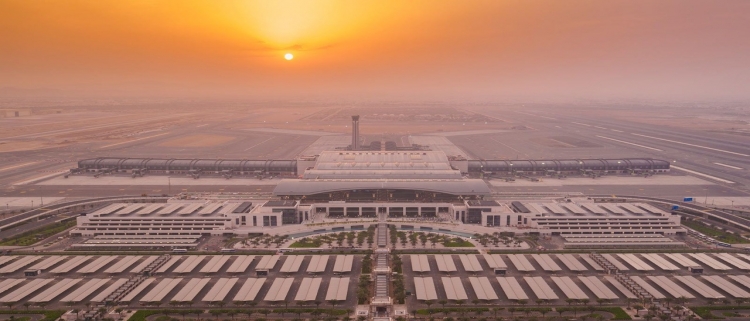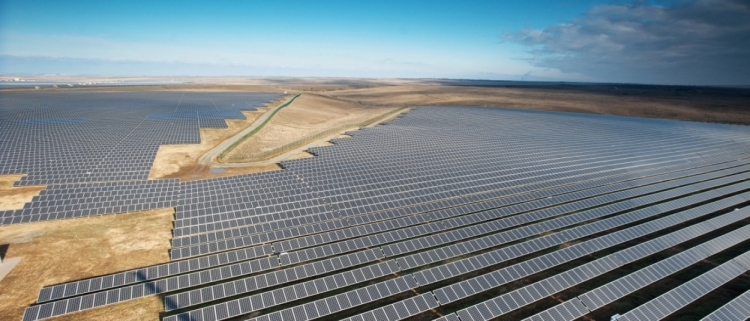 Search
Search

pv magazine speaks to Puneet Singh Jaggi, co-founder and director of Prescinto Technologies
Founded in 2016, Prescinto Technologies is an industrial internet of things solution provider to the solar sector. After two years, Prescinto has found a footing in 13 countries across 4 GW of solar plant capacity. Backed by Gensol Group’s engineering experience across 20 GWs of renewable projects, Prescinto is able to transform that knowledge into code and empowers plants ‘onboarded’ on its platform.

Puneet Singh Jaggi has spoken to pv magazine about IoT, robots, big data and drones in solar.
With a degree in chemical engineering from IIT-Roorkee, Puneet Singh Jaggi is co-founder and director of Prescinto and has been working in solar advisory and operations and maintenance roles for nearly eight years. He also boasts expertise in monitoring and analytics.
pv magazine: How is the internet of things changing the solar landscape worldwide and in India?
Puneet Singh Jaggi: Industrial internet of things – IoT – is a buzzword in almost every sector nowadays. Solar power plants are equipped with connected devices that generate huge amounts of data, from strings to inverters to energy meters. As a result, solar lends itself to a lot of disruption using IoT. Over the last 10 years we have seen optimization at every level in the solar supply chain globally and in India – from economies of scale to localization of products, from enhancement in technology to cheaper modes of financing.
The next wave of optimization is coming from driving higher generation and reduction of operational cost – both of which are powered by actionable insights derived from data acquired from the plant. IoT will help reduce the cost of operations by 30% while increasing project returns by 10%. India is atypical, considering that solar plants here are in remote areas with patchy internet connectivity, so our IoT solutions have to be customized for our realities. For example, we need IoT solutions to work at local plant level as well, when data is not able to find its way to the cloud.
Tell us more about the importance of predictive versus preventive maintenance.
At the beginning of the solar revolution in India we had limited knowledge and talent available. So most practices in operation and maintenance [O&M] were borrowed from thermal power plants which work on a predetermined schedule of maintenance activities for every [type of] equipment installed, referred to as preventive maintenance. This, unfortunately, leads to wastage of resources. Predictive maintenance is a different philosophy wherein, based on analysis of past trends of breakdowns and generation, IoT platforms are able to predict which equipment [is] prone to failure and when. The skilled O&M team then works on only those [pieces of] equipment and ensures better plant uptime. Not only does this save costs, this also ensures least disturbance and highest generation for the plant. Simply put, predictive maintenance is a more scientific and precision-oriented approach than the ‘spray and pray’ approach of preventive maintenance which is the trend in the solar industry currently.
And performance benchmarking?
Performance benchmarking is the age-old practice of comparing [the] output of different equipment installed in a plant, or even different plants, to find gaps and improve performance. While in the past this used to happen at best at a daily level, IoT solutions today allow it to happen in real-time, generating alarms – for instance, when an inverter is performing 5% [worse] than its other counterparts in the same solar plant. This requires taking advantage of big data technologies, local and cloud computing, custom designed dashboards and customized alarms that trigger SMS texts, emails or in-app pop ups for each [piece of] equipment and it delivers a more precise and timely action to extract the best from the solar plant.
What is the next big thing in O&M technology?
Over the next five years we expect O&M to reduce in cost by 30%, which will be possible largely [because of] digital [technology], drones and robotic disruption. Digital or IoT platforms like Prescinto are going to automate O&M whereby, using big data and machine learning algorithms, site teams would work with much better precision, reducing technical manpower – which is the largest cost of O&M – [by] half. We expect a more widespread usage of robots for cleaning, reducing the cost of cleaning per module from 80 paise currently, to 40 paise or less.
Are drones the best answer to cost-effective project security? Give us a comparative cost benchmark between drones and manual security.
Options for project security range from manual guards to day and night cameras to electric fencing. With the improvement of technology, drones can now fly on predetermined paths with regular and infrared vision cameras for hours. They can detect the difference between the heat signature of a man [or] a dog. They can even send instant alerts while they are in the air. While drones will not eliminate the need for manual guards, [they] would significantly reduce [their requirement] to well-equipped, quick reaction teams, instead of a guard with a baton at every 500 meters. As an example, on a 50 MW site the number of guards can be reduced from 17 to 10, reducing the security cost by 40%.
With new drone use laws in India, how much does Prescinto rely on the technology?
The new drone use laws have provided a much-awaited clarity to the commercial use of drones in India and we are already seeing specialists in the field cropping up. As an IoT platform, Prescinto will be able to integrate data about solar module hotspots detected from modules with the onsite measured performance data, and be able to give a comprehensive picture with a click of a button. An asset owner or manager would be able to measure the loss because of the defect detected and take commercial decisions [about] module replacement, warranty claims and more with accurate data to support them. Prescinto is also discussing … forging deeper partnerships with OEMs [original equipment manufacturers] of inverters and trackers for them to be able to monitor their product performance and improve their service levels also.
You have a foothold in 13 countries. Where does India stand in the adoption of modern technology? Are we lagging behind Europe and the U.S. in tech adoption?
I believe that in solar, as in many other fields like space, payments and communication, India has developed innovative technology from [the] ground up and is probably today a net exporter instead of importer of technology at price points which are multiple times lower. The price of O&M per megawatt is already the lowest in the world in India and with a faster adoption of tech here, will go further down.
India’s land and climate diversity can be challenging. There cannot be a one-size-fits-all O&M module. What are the big challenges?
India’s solar plants range from large scale utility to smaller rooftops, from dry and dusty Rajasthan to [the] humid coastal belt and from Rs18 to Rs2.4/unit tariffs. Every plant is unique and as such requires a separate treatment on [the] number of cycles of cleaning,[the] organization chart at [the] site [and] spare requirements, amongst almost every other parameter that goes into O&M. Although there are differences in numbers and technology … the building blocks of any O&M [operation] are the same. The craft of a good operator lies in customizing [an] approach to each plant without overhauling the entire practice. For example, the plants in Gujarat with a Rs15/unit tariff require cleaning 27 times annually, versus those that are commissioned recently that are operated with 15 cycles or fewer.
Prescinto is in the process of rolling out products and services in other segments such as smart factory, energy storage and electric vehicles. What does the future hold?
Global studies have shown utilities, transportation and industries [are] amongst the largest areas of IoT lead disruption. In fact, the value unlocked as a percentage of project cost is higher there than [for] renewable energy. Prescinto is a sector-agnostic platform with different modules like data acquisition, dashboarding, analytics, assets and predictive algorithms that can be used in the context of any industry. We spent the first year focusing on solar. However, with limited product options in energy storage, electric vehicles and smart factories, we would soon expand to those and scale it up from India to a global market in the next two years.

Consulting Services for 6 GW Solar PV Power Project in Riyadh Province, KSA Read More

Read about Gensol's Solar Consulting Services for Majis at Sohar Port Read More

Read how Gensol as a project consultant solarized the International Airports at Oman Read More

Read how Gensol provided Engineering Consultancy Services for a 1 MWp solar PV project at Oman Read More

Read about Gensol's work at Yemen for Estidama Energy Read More

Gensol helped Greenko Group bring India’s largest solar project to life. Read More

Nation Builder - Adani - appoints Gensol to manage construction for its Solar Projects Read More

